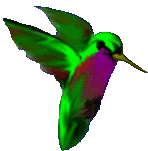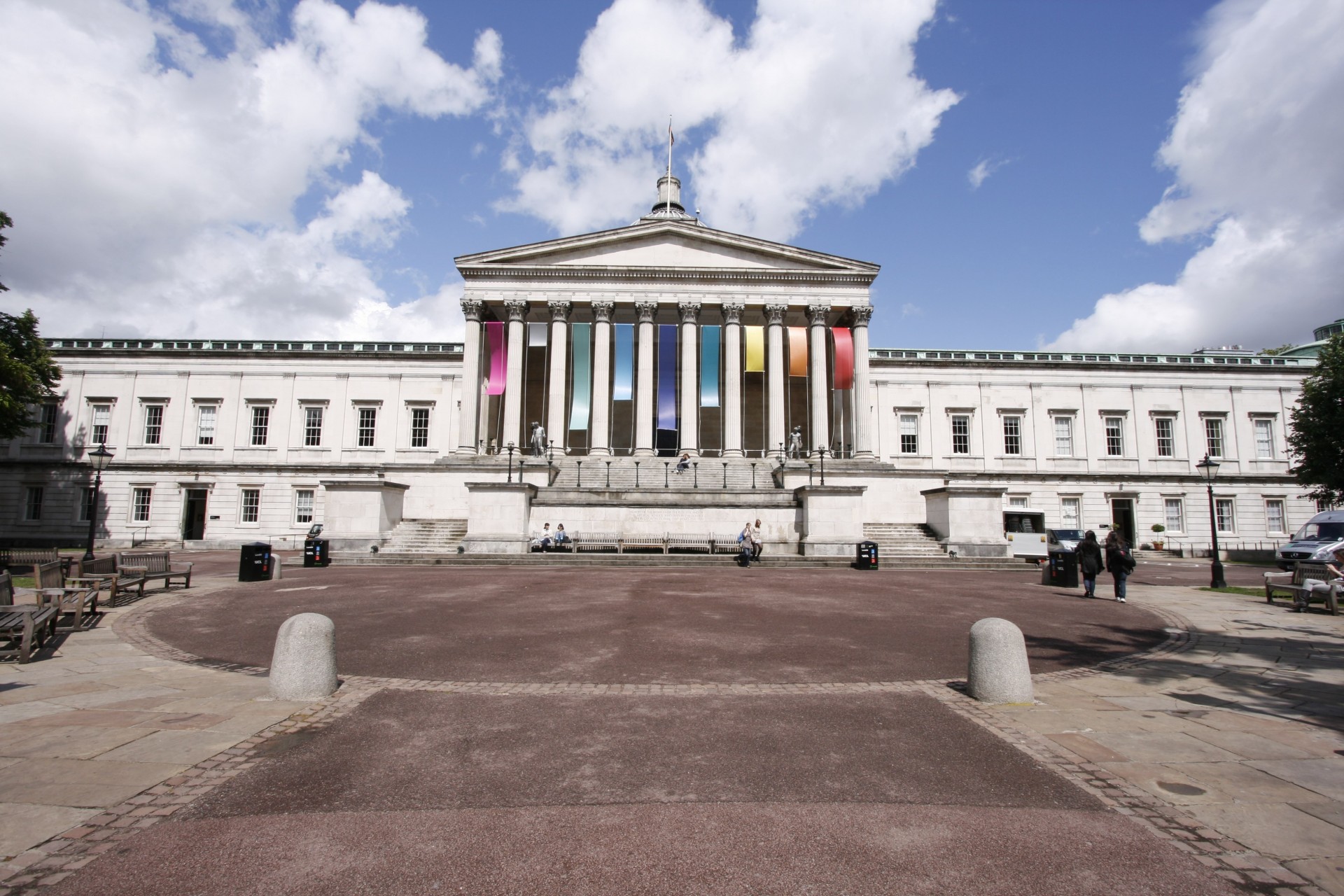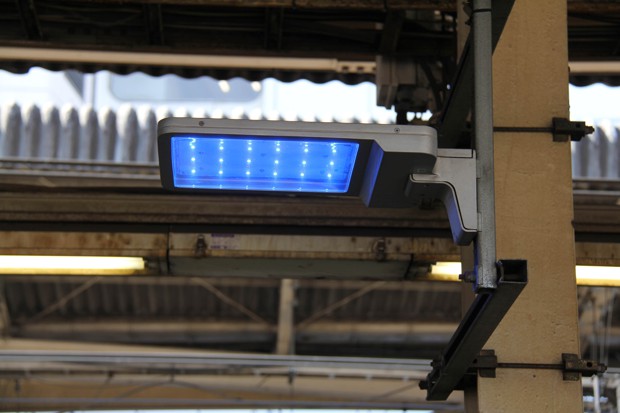Final Project Research
PUBLIC ART & COLOR/LIGHT STUDIES
Hypothesis
Public lighting isn’t doing much for us as it is. This is because most wavelengths of widely used light sources in public spaces (such as fluorescent bulbs) emit harmful wavelengths that are damaging to our physical wellbeing. This also is true in most offices and workspaces, where you can do little to control your environment.
Method
Some countries around the world are funding public art installations which deal with this issue both directly and indirectly, and I will be researching these as well as interviewing people working in various intersecting fields related to color and light and public art, as well as conducting a series of light trials and interviews.
After doing this I will create at least one speculative design for a public lighting and art installation based on the above research.
Research
I found this (possibly questionable) Dinshah therapy system - I ordered the gels and a light.
Even if he was a quack, and it’s possible he truly believed in color therapy but was never legitimized because the pharmaceutical industry took control of deciding what was or wasn’t legitimate medicine, they are still colors that will provide a strong starting point for practical experiments.
My research will include interviews with others on color and light and their relationship to it, as well interviews with experts in the field on working in public art and with color, and on light/neuroscience.
I be researching the light emitted from bulbs and screens of various kinds and the effects different kinds of light have on humans along with the research on colors, intersecting both together (color & light) where I can, as well as focusing on psychological, neuropsychological, and neurophyaical effects of color and light, and the effects of light radiation on the body/skin.
Brainstorming Analogies
People are like plants; we need full spectrum light from the sun.
Balancing your mood is like mixing light to try to create a full spectrum. If you are missing a color, you will feel “off.”
On top of that, specific wavelengths can be targeted on the electromagnetic spectrum to work on certain imbalances of the energy or body. Just as radio waves are used to send radio signals, infrared waves (which are invisible) and the color red (on the visible spectrum) can be used to target certain areas of your body and heal.
Each wavelength on the electromagnetic spectrum can potentially be used for a purpose, and color is itself a form of radiation that we can put to use in our environments for improved health and mood, which would in turn be beneficial for society. At the very least, we could think about the lighting we currently use more critically, and perhaps integrate color therapy into hospitals, airports, and other public spaces that can induce stress.
Potential Experts
Sonja Blum (ITP Professor - The Neuroscience of Color — on light and its neurological effects on the nervous system) (Marina’s rec) (need to e-mail)
Yeseul the resident who works with color (Marina’s rec) (need to schedule office hours)
Eric Rosenthal (Engineering teacher / Basic Analog Circuits / Computer Vision - on light/color and its radiation/properties) (interviewed on 11/12, recorded it and need to transcribe)
Julia Vogl (http://www.juliavogl.com/) - London-based artist working in public light and civic engagement using applications of color and light in temporary and permanent installations (interviewed on 10/29, did not record but took typed notes, will organize notes soon)
Graham Coreil-Allen - Baltimore-based artist working in public art/civic engagement (interviewed on Friday 11/2, did not record but took typed notes, will type up notes soon)
Light therapy practitioner Samyo Delgarno (http://mfieldtherapy.com/) on the instruments he uses and how the engineer he works with decides to make them (have started talking to him about this)
Non-experts but color enthusiasts/volunteers for interviews/trials
K.B. (interviewed)
K.R. (interviewed)
M.K. (confirmed for interview)
Need to find more scientists, and perhaps Margaret will be able to help.
Papers/articles to find and read/include in my research
Olafur Eliasson - papers on the psychology of color in his work)
James Turrell - papers on the psychology of color in his work)
On psychology of color in different cultures in general
On the physiological effects of light
On light and color radiation
On light and color used in medicine
More questions: Does light therapy work on all skin types and colors? How important is this in its efficacy? Is the psychological effect of different colors visually universal, or are there cultural meanings which intercept the pure psychological reaction? What, if anything, about color and light is universal? If nothing, what else can I bring to this project that is universal?
Bibliography
Books
Light: Medicine of the Future: How We Can Use It to Heal Ourselves NOW by Jacob Lieberman
Let There Be Light by Darius Dinshah
Websites/Articles
“The Amazing Psychology of Japanese Train Stations”
Post-Margaret appt:
PubMED (clinical trials)
Blocking nocturnal blue light for insomnia: A randomized controlled trial.
Potential for the development of light therapies in mild traumatic brain injury.
Clinical recognition of hypoxaemia under fluorescent lamps.
Premenstrual mood and empathy after a single light therapy session.
Effect of exposure to short-wavelength light on susceptibility to motion sickness.
Blue-Light Filtering Spectacle Lenses: Optical and Clinical Performances.
Blue-blocking glasses as additive treatment for mania: a randomized placebo-controlled trial.
Effect of phototherapy with turquoise vs. blue LED light of equal irradiance in jaundiced neonates.
Afternoon nap and bright light exposure improve cognitive flexibility post lunch.
Effects of blue light and caffeine on mood.
Randomized controlled trial of light therapy for fatigue following traumatic brain injury.
In-car nocturnal blue light exposure improves motorway driving: a randomized controlled trial.
The color red reduces snack food and soft drink intake.
Light therapy for seniors in long term care.
Effects of changes in colored light on brain and calf muscle blood concentration and oxygenation.
Qualitative analysis of therapeutic light effects on global function in Alzheimer's disease.
Amber lenses to block blue light and improve sleep: a randomized trial.
Low-intensity LED therapy (658 nm) on burn healing: a series of cases.
Dopamine and light: effects on facial emotion recognition.
Interviews
K.B.
- Based on past experiences they do not like fluorescent lighting or having to work in it for long periods of time and prefers natural light if possible, or low lighting indoors.
- In terms of colors they are attracted to red/orange/yellow.
Misc. Questions
1. Color (Light) and Sound
Does sound help to supplement color therapy? How can it complement colors across the electromagnetic spectrum? Are the sounds that are most similar to their corresponding color over the spectrum related in their healing properties?
This theory is different than the one based on energy centers in the body (or chakras) but more based on math across the electromagnetic spectrum.
2. Light/Color and Public Art
Where in the world is this being implemented already? What publicly funded artwork (and lighting) is playing with these ideas, even if it’s not directly with the color healing relationships to the body? How does public art affect those who see it? What semi-public art is doing similar things (in publicly accessible, paid-entry locations)? Try to find reviews, reactions to these installations.
1000 Opinions by Julia Vogl This hyperbolic bar chart and colour field painting reflect the public's opinion of where they would allocate a spare million of public spending. I surveyed 1000 people throughout London, a 100 people in 10 different communities, asking them to select one area from the London Greater Authority Budget list. The options were: ARTS & CULTURE (hot pink) BUSINESS & ECONOMY (gray) HEALTH ( seafoam green) HOUSING ( sky blue) EDUCATION ( royal blue) ENVIRONMENT ( turquoise) SAFETY & POLICING ( yellow) SPORTS & OLYMPICS ( orange) TRANSPORTATION ( red). I then made a steel mechanism that with the banners functioned as massive roller blinds. Each day of the show the banners were lowered or raised to reflect a different communities results.
http://www.juliavogl.com/portfolio/public-works/1000-opinions/
Sun Stomp
Premiering at the 2018 Light City Baltimore festival, Sun Stomp was a solar powered light and interactive audio-visual environment that for eight nights activated McKeldin Square. The monumental scaffolding sculpture featured an interactive projection on one side and an array of sixteen 290 watt solar panels on the other. Electrical energy collected during the day and was stored as chemical energy in a battery bank which provided electricity to a colorful array of LED neon lights illuminating the structure after dark. Participants were invited to stomp on the bleacher footboards to trigger sun-inspired visuals and amplified sounds of the Sun sourced from NASA’s Solar Dynamics Observatory. Passersby were also invited to peer into the custom built “Power Shed” to learn about the solar technology and AV controls energizing the project. Foot-stomping powers combined, participants visually and experientially conjured the awesome and beautiful power of the sun.
Choose your own Adventure transformed Baltimore’s Charles Street Bridge into a colorful playscape of pedestrian pathways and hanging beach balls. The project was commissioned by Baltimore Office of Promotion and the Arts for the free 2018 Artscape festival. Spray chalk lines marked a site-based map converging under a forest of beach balls hanging from an open air structure. The streetscape-enhancing project was a collaboration between Baltimore-based public artists Becky Borlan and Graham Coreil-Allen.
Choose your own Adventure took inspiration from the natural paths taken by street-crossing pedestrians, the Jones Falls and train tracks below, and the joyful experiences of summer-inspired toys. Hundreds of thousands of festival goers interacted with the kinetic environment of over four hundred colorful, translucent beach balls and a line striping street mural covering over three thousand square feet. Numerous beach balls featured hand-painted instructions offering choices for adventures beyond. Adventures included “Write a Poem in the Dirt”, “Change your name for the summer,” and “Take the first train to the end of the line.” Through tactical urbanism and creative design, the installation previewed possibilities for completely transforming the Charles Street Bridge into a playful, poetic, and pedestrian environment.
“Georgetown will light up this winter with nine public art installations” (2017) https://dc.curbed.com/2017/11/27/16686450/georgetown-glow-artists-2017
LIGHT: Installations by Bruce Munro, Opens at Longwood Gardens https://longwoodgardens.org/news/press/2012/06/09/light-installations-bruce-munro-opens-longwood-gardens
Longwood Gardens “Nightscape” - Set over Longwood Gardens' expansive grounds in Kennett Square, PA, Nightscape combines the projection mapping technology of Klip Collective with the sounds of Sun Airway, Pink Skull and more, and leads guests on an immersive and imaginative nighttime journey. Over two seasons, Nightscape has attracted nearly 300,000 visitors.
The Amazing Psychology of Japanese Train Stations
https://www.citylab.com/transportation/2018/05/the-amazing-psychology-of-japanese-train-stations/560822/
Nightscape: A Light And Sound Experience Returns To Longwood Gardens On August 3 (2016) https://www.uwishunu.com/2016/07/coming-attraction-nightscape-light-sound-experience-klip-collective-returns-longwood-gardens-august-3/
3. Color and Food
Does the food we eat affect our mood similarly to how colored light affects our mood? What does the color of food tell us? What does it not tell us? Not sure yet if this will make it into the final project or not, but it is of interest.
Lo-fi Prototypes
Further Research
My Pinterest on light art has been started here.










